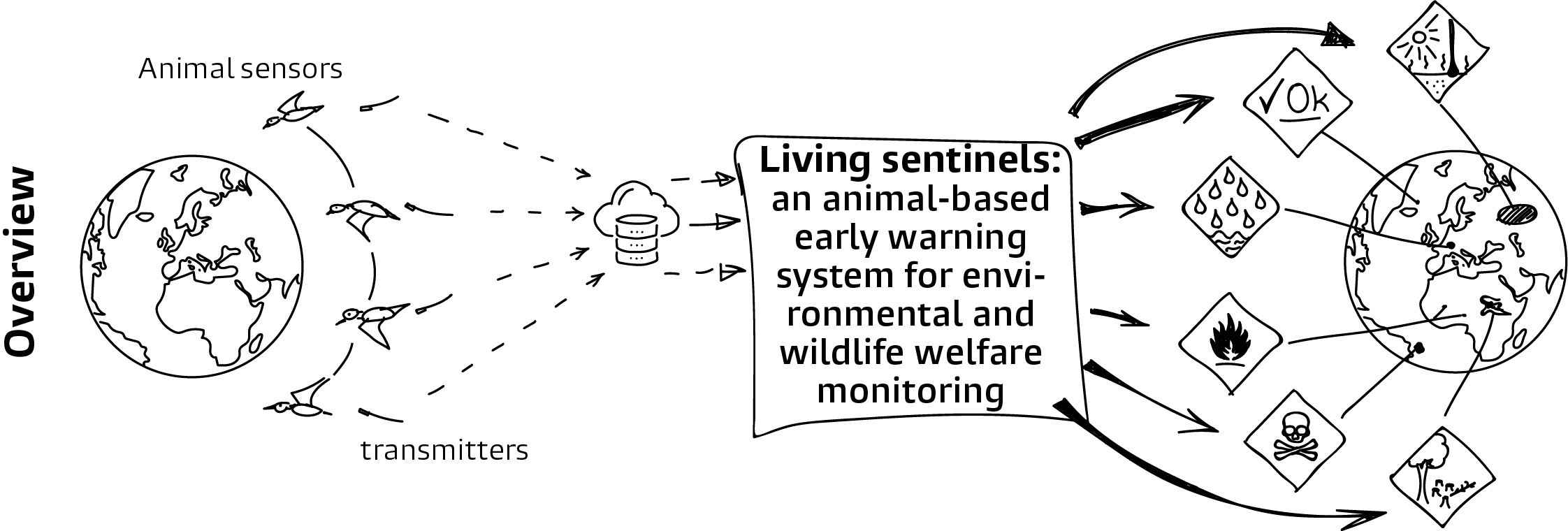 visualisation by E.Rakhimberdiev
visualisation by E.Rakhimberdiev
Living sentinels - an animal-based early warning system for environmental and wildlife welfare monitoring
Current technology enables instant remote surveillance of environmental and wildlife welfare through observations of animals, who are the top environmental experts. When animals face environmental disasters, disturbance, or scarcity of resources, they change their behaviour. These stress-induced changes can be traced in movement time-series and used to pinpoint even latent environmental pressures experienced by individuals.
Today, thousands of animals of many species wear tracking devices that transmit measurements of their movements to central repositories. With these measurements, available to me through collaborations with Wikelski (Movebank), Jetz (Yale) and Bouten (University of Amsterdam), I build on the existing array of indicators of stress (changes in rhythmicity of behaviour, complexity of movements and early warning indicators) and on explosive progress in machine learning to develop a framework that uses these animals as living sensors. Implemented within Movebank and UvA-BiTS movement data infrastructures, my animal-sensing approach will estimate likelihood of stress experienced by animals to enable near real-time global nature monitoring.